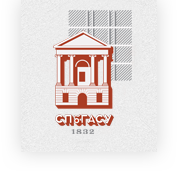Exploring the Narrative Techniques in The Story of an Hour
DOI:
https://doi.org/10.63313/LLCS.9029Keywords:
Kate Chopin, The Story of an Hour, Narrative TechniquesAbstract
This paper examines the narrative techniques in Kate Chopin’s The Story of an Hour and their role in articulating feminist themes within the context of 19th-century patriarchal constraints. The story follows Mrs. Mallard’s transformative journey from a repressed wife to a newly awakened individual embracing freedom, albeit briefly. Through techniques such as the third-person limited point of view, contrastive symbolism, multisensory imagery, shifts in tone and mood, and a carefully structured three-act rhythm, Chopin critiques societal expectations that suppress women’s autonomy. The narrative’s ironic twists further underscore the societal limitations imposed on women. The analysis reveals that these techniques collectively amplify three central themes: the complexity of human emotions, as Mrs. Mallard’s feelings evolve from grief to nuanced liberation; the constraints of societal expectations, which stifled women’s autonomy; and the quest for freedom and self-identity, as Mrs. Mallard briefly experiences selfhood before her tragic demise. Chopin’s craftsmanship underscores the tension between individual freedom and societal repression.
References
[1] 蔡萌. 19世纪初美国工人的阶级矛盾[J]. 历史研究,2022(04):146-164.
[2] 金莉,张剑. 文学原理教程[M]. 北京:外语教学与研究出版社,2010:6-9.
[3] 李新梅,张谡过. 一小时的故事,一小时的梦想——评凯特·肖邦《一个小时的故事》[J]. 西安外国语大学学报,2015(04):108—111.
[4] 万雪梅. 爱在美和死——凯特肖邦作品研究[D]. 上海:上海外国语大学,2012(04):22-24.
Downloads
Published
Issue
Section
License
Copyright (c) 2025 by author(s) and Erytis Publishing Limited.

This work is licensed under a Creative Commons Attribution-ShareAlike 4.0 International License.















